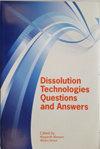人工取样与原位紫外光纤系统对依非韦伦在生物相关溶出介质中释放的比较
IF 1
4区 医学
Q4 PHARMACOLOGY & PHARMACY
引用次数: 0
摘要
在药物制剂研究和开发中使用生物相关溶出介质的兴趣日益增加。生物相关介质模拟人体胃肠道的生理条件,这允许更有区别的溶解试验。对于难溶性药物,如依非韦伦和其他II类(生物制药分类系统)药物,这一点更为重要。传统上,这些培养基用于药典标准溶出仪;然而,降低常规测试的自动化程度通常会导致成本高昂、耗费大量人力并且容易出错。因此,原位紫外(UV)光纤探针已被应用于药物制造的研究和开发以及质量控制程序中。本研究旨在通过与传统人工取样的比较,评价原位紫外动态监测系统对600 mg依非韦伦速释包衣片在不同生物相关介质中的溶出行为的适用性。所使用的生物相关培养基为禁食和饲喂状态模拟肠液(FaSSIF、FaSSIF- v2、FeSSIF、FeSSIF- v2)和SLS(0.5%)。FaSSIF、FaSSIF- v2和SLS的两种采样方法相似。对于FeSSIF和FeSSIF- v2,由于这些培养基中含有高浓度的氧化磷脂和降解脂质,因此结果具有统计学差异。这些结果支持对FaSSIF、FaSSIF- v2和SLS溶出度进行动态监测,并有助于理解限速步骤,从而提高生物相关介质溶出度试验数据采集的质量和准确性。本文章由计算机程序翻译,如有差异,请以英文原文为准。
Comparison of Efavirenz Release in Biorelevant Dissolution Media Using Manual Sampling and In Situ UV Fiber Optic System
There has been a growing interest in the use of biorelevant dissolution media in drug formulations research and development. Biorelevant media mimic the physiological conditions of the human gastrointestinal tract, which allows for a more discriminating dissolution test. That is even more important for poorly soluble drugs, like efavirenz and other class II (Biopharmaceutical Classification System) drugs. Traditionally, these media were used in the compendial standard dissolution apparatus; however, reduced automation of the conventional tests could be, in general, costly, high-labor, and error-prone. Thus, the use of in situ ultraviolet (UV) fiber optic probes has been applied in research and development and in quality control routines for drug manufacturing. The present study aims to assess the suitability of an in situ UV dynamic monitoring system for characterization of dissolution behavior of 600-mg efavirenz immediate-release coated tablets in different biorelevant media by comparison with traditional manual sampling. The biorelevant media used were fasted and fed state simulated intestinal fluid (FaSSIF, FaSSIF-V2, FeSSIF, FeSSIF-V2) and SLS (0.5%). Both sampling methods were similar for FaSSIF, FaSSIF-V2, and SLS. For FeSSIF and FeSSIF-V2, the results were statistically different due to high concentration of oxidation phospholipids and degradation lipids in these media. These results support the use of dynamic monitoring of dissolution in FaSSIF, FaSSIF-V2, and SLS, and inform understanding of the rate-limiting steps, which may improve quality and accuracy in data acquisition for dissolution tests with biorelevant media.
求助全文
通过发布文献求助,成功后即可免费获取论文全文。
去求助
来源期刊

Dissolution Technologies
医学-药学
CiteScore
1.20
自引率
33.30%
发文量
14
审稿时长
3 months
期刊介绍:
Dissolution Technologies is a peer reviewed quarterly
publication reporting ongoing, useful information on
dissolution testing of pharmaceuticals. It provides an
international forum for dissolution analysts to receive
and exchange information on various dissolution topics.
Dissolution Technologies welcomes submissions related
to dissolution, in vitro release, and disintegration testing.
These topics should be the major focus of the article.
Do not submit articles where the focus is formulation
development with dissolution testing as one of many
tests.
 求助内容:
求助内容: 应助结果提醒方式:
应助结果提醒方式:


